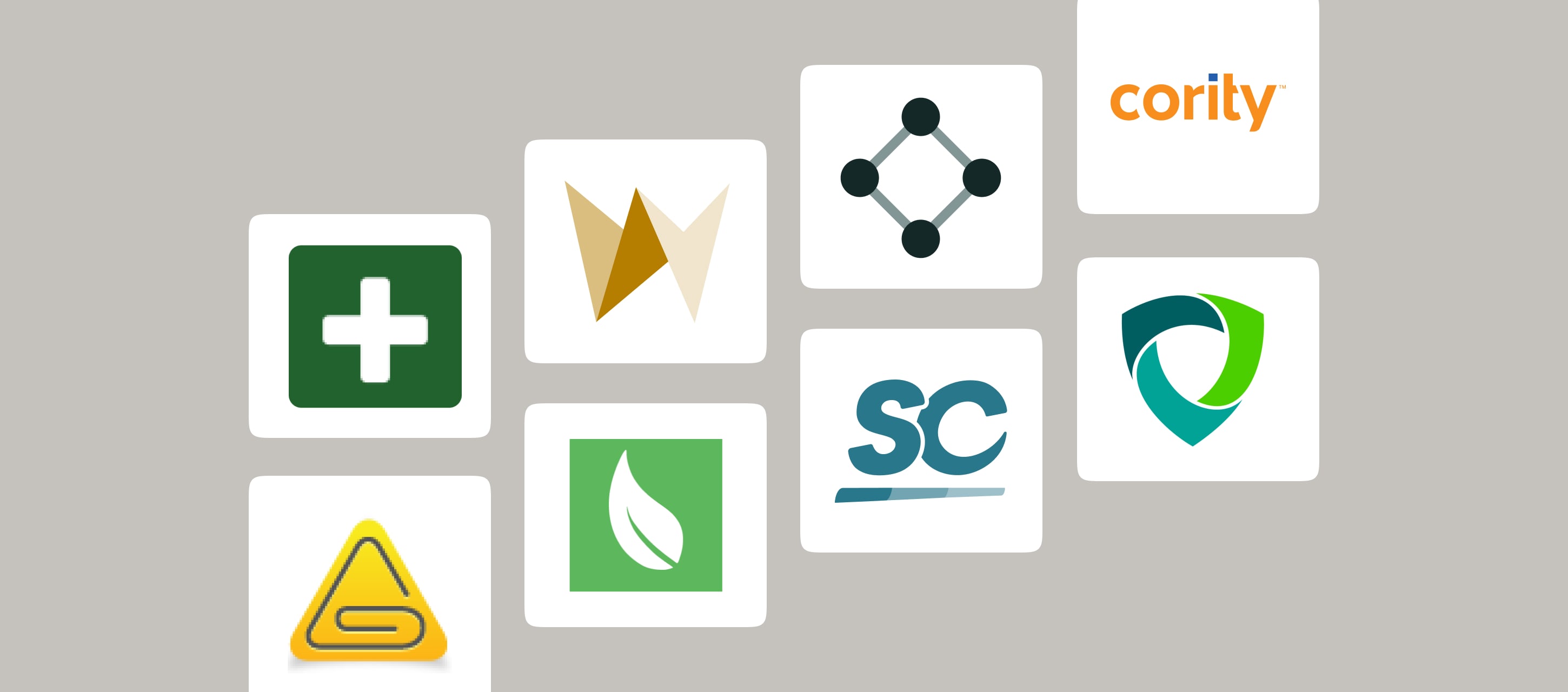In high-risk industries like aviation, construction, and energy, prioritizing safety is non-negotiable. It’s also a key factor in meeting regulatory standards set by organizations like the Occupational Health and Safety Administration OSHA and Environmental Health and Safety (EHS) Services.
So, how can you ensure your team stays safe while also maintaining field productivity? Let’s explore 10 essential safety metrics that help reduce workplace incidents.
Contents:
- 1. Lost Time Incident Rate (LTIR)
- 2. Total Recordable Incident Rate (TRIR)
- 3. Near Miss Rate (NMR)
- 4. Days Away, Restricted or Transferred (DART)
- 5. Injury Frequency Rate (IFR)
- 6. Injury Severity Rate (ISR)
- 7. Lost Workday Incident Rate (LWIR)
- 8. Training Completion Rate (TCR)
- 9. Toolbox Talks Attendance
- 10. Safety Audits Submitted
- How to Measure Your Safety Performance Using Safety Metrics
There is no fixed list of safety metrics, and their number can vary based on the industry, regulatory requirements, and internal safety goals of your organization.
The 10 safety metrics examples we’ll discuss here are some fundamental types that help monitor safety performance and prevent accidents and injuries, but you can customize them based on your needs.
Note that for best results, each metric should follow the SMART framework. That means it should be specific, measurable, achievable, relevant and time-bound.
1. Lost Time Incident Rate (LTIR)
LTIR is a safety metric that measures the number of work-related incidents per 100 full-time employees.
For this metric, you only count incidents that result in time away from work. LTIR is one of the most important safety measurements because it directly correlates with the severity of accidents occurring within the workplace.
To calculate LTIR, multiply the number of lost time incidents by 200,000. Then, divide the result by the total hours worked during the measurement period. This formula provides the LTIR rate of 100 employees working 40 hours a week for 50 weeks.
Let’s look at the example. If your workplace of 100 people had five lost time incidents in 30 workdays, you would multiply five by 200,000 to get 1 million. Then, you’d multiply 100 workers eight hours in a workday times 30 workdays to reach 24,000. Finally, 1 million divided by 24,000 gives you an LTIR of 41.67.
2. Total Recordable Incident Rate (TRIR)
TRIR is a safety metric that includes all work-related safety incidents that result in death, lost time, days of restricted work, transfer to another job, medical treatment beyond first aid or loss of consciousness.
Measuring TRIR as part of the OSHA safety metrics provides a broad understanding of your company’s safety incidents so you can evaluate performance and identify critical improvement areas.
To calculate TRIR, multiply the total number of reportable incidents by 200,000. Then, divide the result by the total hours worked during the measurement period.
3. Near Miss Rate (NMR)
NMR is a safety metric that is an unplanned event that could have but did not cause injury, illness or damage.
An increasing NMR is an early warning of serious potential hazards so by tracking it you can immediately mitigate these dangerous conditions. Encouraging employees to report near misses promotes a culture of safety and prevention in your workplace
Software can play a crucial role in streamlining this process. Safety management tools like Fluix can provide a centralized platform for reporting, allow people to report near misses in real-time, and can be integrated with other systems for better efficiency.
Read More Read More Paper vs. digital: why it’s more secure to manage your safety documentation with software
4. Days Away, Restricted or Transferred (DART)
DART is a safety metric that measures the number of incidents resulting in days away from work, job restrictions or transfers to other duties.
You can calculate the so-called DART rate by multiplying all DART incidents by 200,000, then dividing by the total hours worked during the measurement period.
Finding your company’s DART rate illuminates the impact of workplace safety failures on productivity. This metric also gives insight into the effectiveness of the company’s training and safety inspections.
5. Injury Frequency Rate (IFR)
IFR is a safety metric that indicates the number of injuries over a set number of hours worked, usually per million hours.
It shows how often injuries occur regardless of their severity. The IFR lets you track injury trends over time and compare performance to industry benchmarks or internal targets.
6. Injury Severity Rate (ISR)
ISR is a safety metric that measures the gravity of the injuries occurring, typically by calculating the total number of lost days due to injury per million hours worked.
It helps businesses assess the seriousness of accidents and the effectiveness of safety and health management system in preventing severe injuries.
7. Lost Workday Incident Rate (LWIR)
LWIR is a safety metric that focuses on incidents resulting in missed workdays.
The LWIR only counts days beyond the day of the incident, using a formula similar to that of LTIR.
This metric helps companies gauge the impact of serious accidents on operational efficiency and employee well-being.
8. Training Completion Rate (TCR)
TCR is a metric that tracks the percentage of required safety and health training programs completed by employees.
TRC is one of the commonly used EHS metrics. Tracking the training completion rate ensures that the entire team has the knowledge and skills to perform their jobs safely. High TCRs typically correlate with lower incident rates. This metric highlights the importance of comprehensive safety training.
9. Toolbox Talks Attendance
Toolbox talks are informal safety meetings about specific, current job-site issues.
Tracking attendance at these discussions provides insights into employee engagement with safety practices. High attendance rates suggest a strong safety culture and awareness. You should hold toolbox talks every day, but they don’t need to be longer than 10 or 20 minutes to have a powerful effect. Use the best practices to deliver safety talks, and set an agenda so the team knows what to expect and comes prepared for a productive conversation.
10. Safety Audits Submitted
Safety audits submitted is a metric that refers to the number or status of safety audits that have been submitted or completed.
Companies often conduct safety audits to assess and ensure compliance with safety regulations and protocols, evaluate the effectiveness of safety programs, and identify workplace risks. The results of the audits, documented in safety reports or records, contribute to essential safety documentation.
Tracking the number of safety audits submitted and acted upon shows that the company proactively identifies and mitigates potential hazards. More submitted audits suggest a robust approach to continuous safety improvement.
How to Measure Your Safety Performance Using Safety Metrics
Measuring safety performance means turning data into actionable steps to improve safety and productivity. Tools like Fluix help by digitizing workflows, enabling teams to collect, review, and submit reports using a mobile app for safety inspections – even offline.
This will simplify tasks like quality control, inspections, and incident reporting while keeping documentation centralized and accessible.
For Site Engineers: Fluix lets engineers complete and share checklists, capture data with photos and geolocation, and collaborate across shifts seamlessly. You can manage multiple inspections and document hazards and controls directly in the app.
For Quality Teams: Completed checklists are sent directly for review, with options to return items for corrections or approve them in real time. This ensures a smooth, transparent process without delays from emails or calls.
For Project Leads: Fluix provides visibility into document progress, allows easy team management, and ensures uniformity with customizable permissions and naming conventions. Incident reporting is streamlined with clear workflows for forms like injury or witness reports.
By using one or all of the above features, you can improve your safety metrics tracking, and keep teams focused on safety and efficiency.







